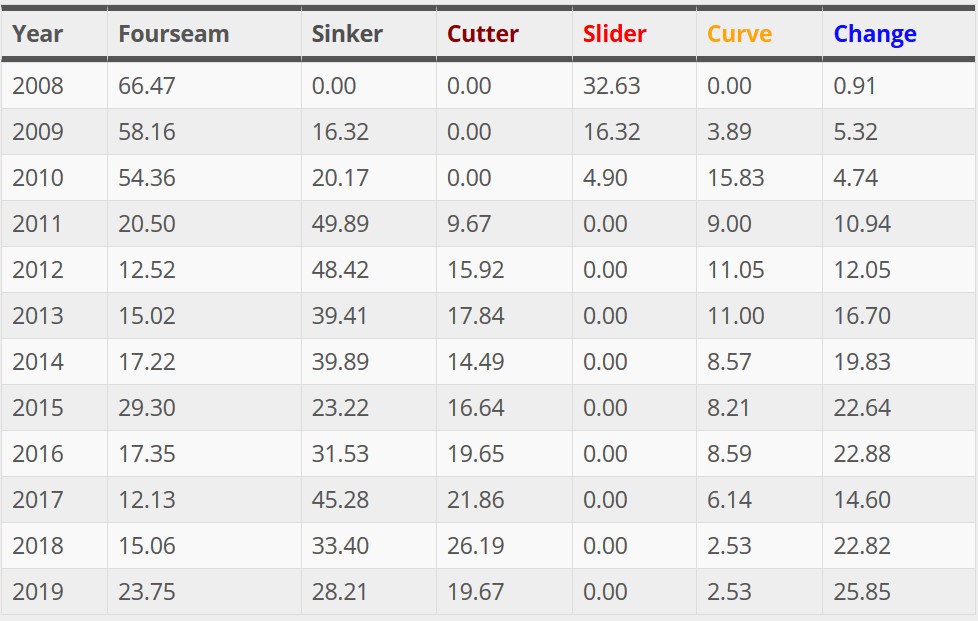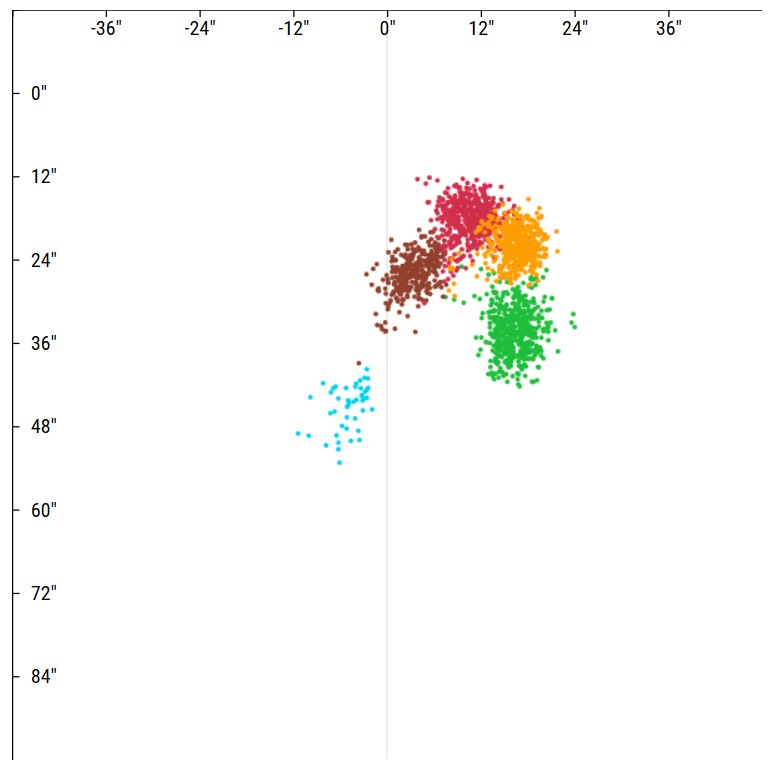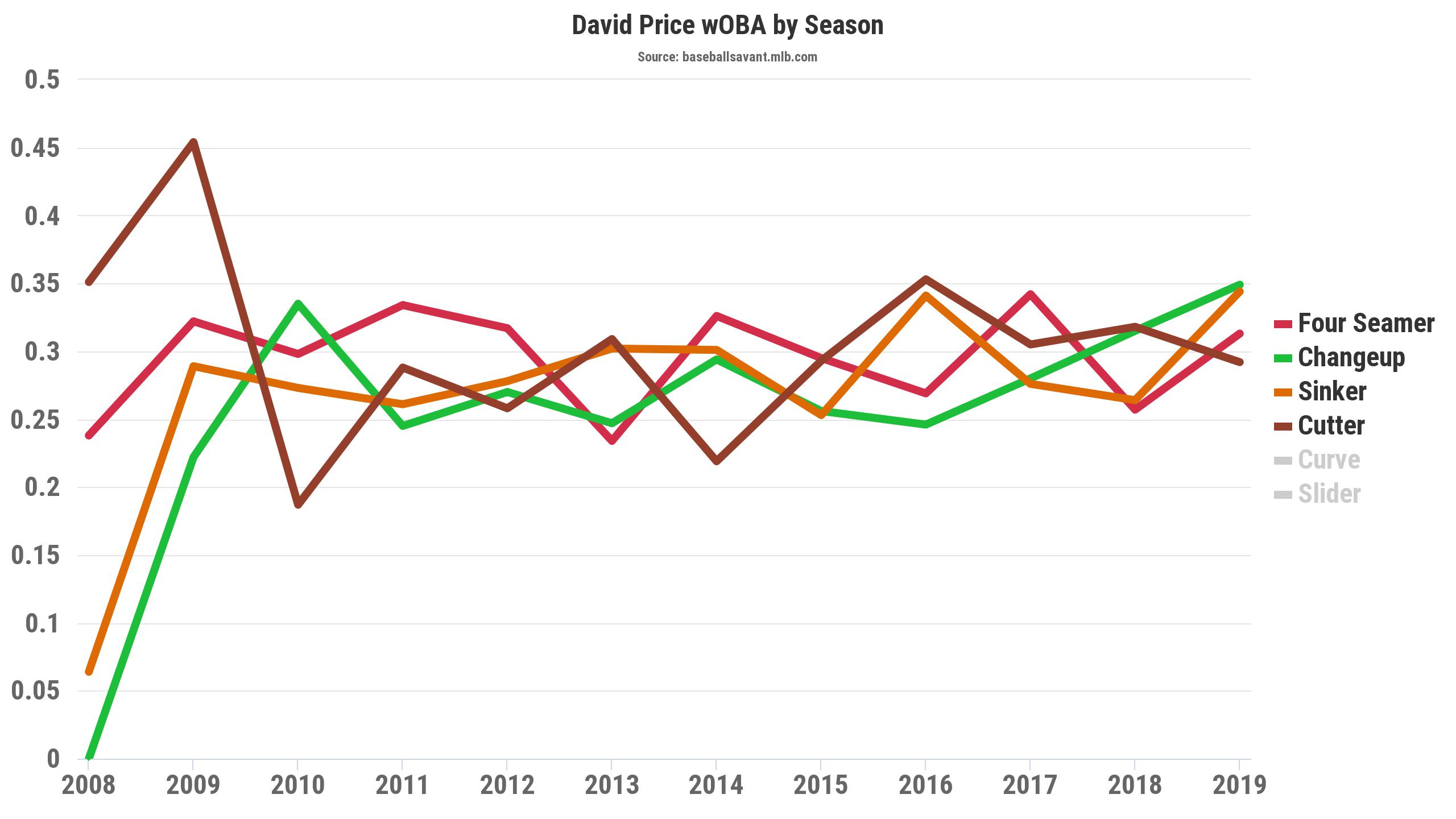Nearly 16 years after the Dodgers drafted David Price in the 19th round of the 2004 MLB Draft, the 34-year-old pitcher is finally a member of the franchise. Price obviously didn’t sign with the Dodgers out of high school, instead spending three years at Vanderbilt before Andrew Friedman took him No. 1 overall in the 2007 Draft.
Price is now long removed from his days as a perennial All-Star with Tampa or being worth the $96 million he’s due over the next three seasons. Of course, that’s not what the Dodgers will be paying him. With the $48 million sent by the Red Sox in the Mookie Betts trade, Price’s $16 million per year for the Dodgers ranks 25th among base salaries for starting pitchers according to Spotrac.com. That puts him in a similar range to the Cardinals’ Miles Mikolas, the Diamondbacks’ Mike Leake and the Royals’ Danny Duffy.
CONTRACT VALUE
A few weeks ago, The Athletic’s Andy McCullough wrote a pair of executives said they would not value Price at more than $15 million per season. Meanwhile 32-year-old Dallas Keuchel signed a 3-year, $55-million deal with the White Sox and 30-year-old Madison Bumgarner signed a 5-year, $85-million deal with the Diamondbacks.
Price is older with more innings on his arm in the majors (2,129 innings) than Bumgarner (1,948 1/3 innings) and Keuchel (1,3612 2/3 innings), but spent considerably less time in the minors with just 157 innings compared to 380 2/3 innings for Bumgarner and 515 innings for Keuchel.
Now the long-term arm concerns for Price obviously stand out over the other two. In 2017, Price spent nearly two months on the disabled list with a left elbow strain and then another month and a half with left elbow inflammation. After a healthy 2018, left elbow tendonitis cost Price two weeks, and a cyst on his left wrist another month in 2019. Bumgarner’s injuries have been flukier, with a fractured finger costing Bumgarner the first two months of 2018 and a dirt bike accident resulting in about three months on the DL in 2017. Keuchel’s only trip to the DL came in 2017 with a pinched nerve in his neck.
While Price is absolutely the riskier pitcher of the three, he’s also been the best over the past few years. Here’s the basics of the past two seasons, though I could post a four-year stretch and it would pretty much look the same, while a three-year stretch is even despite Price’s injuries.
CHANGES
Price posted the best K% of his career in 2019 at 28.0% in his 107 1/3 innings. It wasn’t a fluke, with a 24.5% in 2018 and 24.0% in both 2017 and 2016. Similarly, Price’s K-BB% of 21.0% was the best since a 23.1% mark in 2014 with 43.4% of his pitches on the edge of the strike zone (league average is 39%).
Unsurprisingly, Price’s HR/FB rates while in Boston also rose to career highs. Surpassing 13% in three seasons (2016, 2018 and 2019), Price’s previous worst was 11.1% in 2009. While it isn’t the full story, those three seasons also happen to be Price’s three highest Pull% allowed with 2018 and 2019 also the highest percentage of right-handed batters the lefty has ever seen (83.79% and 82.09% of total batters faced). Price’s four years with the Red Sox were also his four highest Hard% on contact, ranging between 32.2% and 36.9%, though it has trended up throughout his career.
Those rates have come as Price has evened out his pitch usage more than any point in his career.
For the first time in his 12-year career, Price reached a 19% usage on four different pitches. With that comes the lack of reliance on one specific pitch. The 28.21% usage of his sinker was the lowest number for a most-used pitch in his career, while Price’s change (25.85%) reached its highest rate ever.
While his sinker usage has come down, its value still ranked among the league’s best while he was on the mound the past two years. Arbitrarily selecting a date range of March 2018 to May 2019 (with a minimum of 150 innings), in part to compensate for Price’s injuries this past season, shows Price’s sinker value of 19.7 runs above average against leading baseball while his cutter’s 3.9 ranked 15th. Running their value of runs above average per 100 pitches, Price’s 1.78 for his sinker ranked 10th (out of 111), the 0.43 on his cutter ranked 19th (out of 53) and his 0.57 on four-seamers ranked 36th (out of 123). Coupled with his change, Price’s main four pitches all have a similar above-average break away from right-handed batters.
According to Baseball Savant’s visual pitch report, Price’s cutter (brown, 4 inches and average velo 88.5 mph), four-seamer (red, 11 inches and average velo 91.9 mph), sinker (orange, 17 inches and average velo 91.9 mph) and change (green, 17 inches and average velo 84.1 mph) all break three inches horizontally more than league average and drop one or two inches less vertically than league average.
Truthfully it is tough to get a clear read on Price’s arsenal the past four years as he’s used his four top pitches so interchangeably and his sinker trended back down to a level closer to his 2015 mark when pitching for the Tigers and Blue Jays. While Price has mixed the four main pitches to varying degrees, they have all been his best pitch according to wOBA at different times the past four years.
Because that graph is a little tough to read since it goes all the way back to 2008, that is the cutter at .292 in 2019, the four-seamer at .257 in 2018, the sinker at .276 in 2017 and the change at .246 in 2016.
RANKS AGAINST THE LEAGUE
Still relying a bit on an arbitrary start and end points, Price’s year-long stretch between June 1, 2018 and May 31, 2019 showed him ranking in the top 20 of multiple categories with a minimum of 160 innings. Running a SIERA of 3.56 and a xFIP of 3.61, Price ranked 11th and 16th alongside names such as Clayton Kershaw, Masahiro Tanaka and Corey Kluber. Additionally, his 26.4 K% and 21.0 K-BB% ranked 14th and 11th among the 59 pitchers under the requirements. That stretch includes a disastrous start in New York against the Yankees, giving up eight runs, including five homers, in just 3 1/3 innings that cost Price 0.6 WAR and his FIP and ERA to rise by more than half a run.
Looking at full seasons during Price’s Boston years, he’s ranked at or below the league’s average in wOBA/xwOBA. Last year, Price’s .319/.308 both ended up lower than the league’s average (.320/.319). In 2018, Price’s numbers were .300/.314 with the league’s average at .315 for both and in 2017, Price finished at .285/.312 with the league at .321/.325.
——
Overall, Price has been worth 6.2 WAR over the past three years despite throwing just 358 innings. In that same stretch, now former Dodger Rich Hill (didn’t like writing that) finished with 4.9 WAR across 327 innings while playing under the same contract Price will now effectively have with the Dodgers. As I have mentioned plenty times on Twitter, the Dodgers paid Hill for his age 37 to 39 seasons and a much lesser track record than Price. The Dodgers now have Price’s age 34 to 36 seasons, albeit with some concerns about his arm.
At a minimum, Price should hopefully match his ZiPS projection of 6.0 WAR in about 353 innings over the next three years while offering some versatility come the postseason (he’s got four appearances out of the bullpen in his last 13 playoff games since 2015). At best, Steamer has Price projected for 3.1 WAR in 164 innings for 2020 and reaching that should be possible if he’s on the mound.
 Dodgers Digest Los Angeles Dodgers Baseball Blog
Dodgers Digest Los Angeles Dodgers Baseball Blog






